Some dog breeds were born to chill in the snow. Others thrive under the sun. If you live in an area where the temperature gets cold or really hot, then you definitely need a dog that can handle it. Not every dog can survive in extreme temperatures, and that is completely fine. But if you are looking for the best breeds that are well-suited for the hottest or coldest climates, then you are in the right place!
We will help you choose the best dog breed for extreme climates in this blog. We will cover seven amazing breeds built for icy conditions, mountain snow, deserts, and hot weather. Let’s get on with it!
Dog Breeds For Extreme Climates
1. Alaskan Malamute

The Alaskan Malamute is one of the most powerful cold-weather dog breeds. WebMD states that it was originally bred by the Mahlemut Inuit people to pull sleds and survive in the freezing Arctic climates. These dogs are known for their strength and thick double coat that helps them stay warm even in extremely low temperatures.
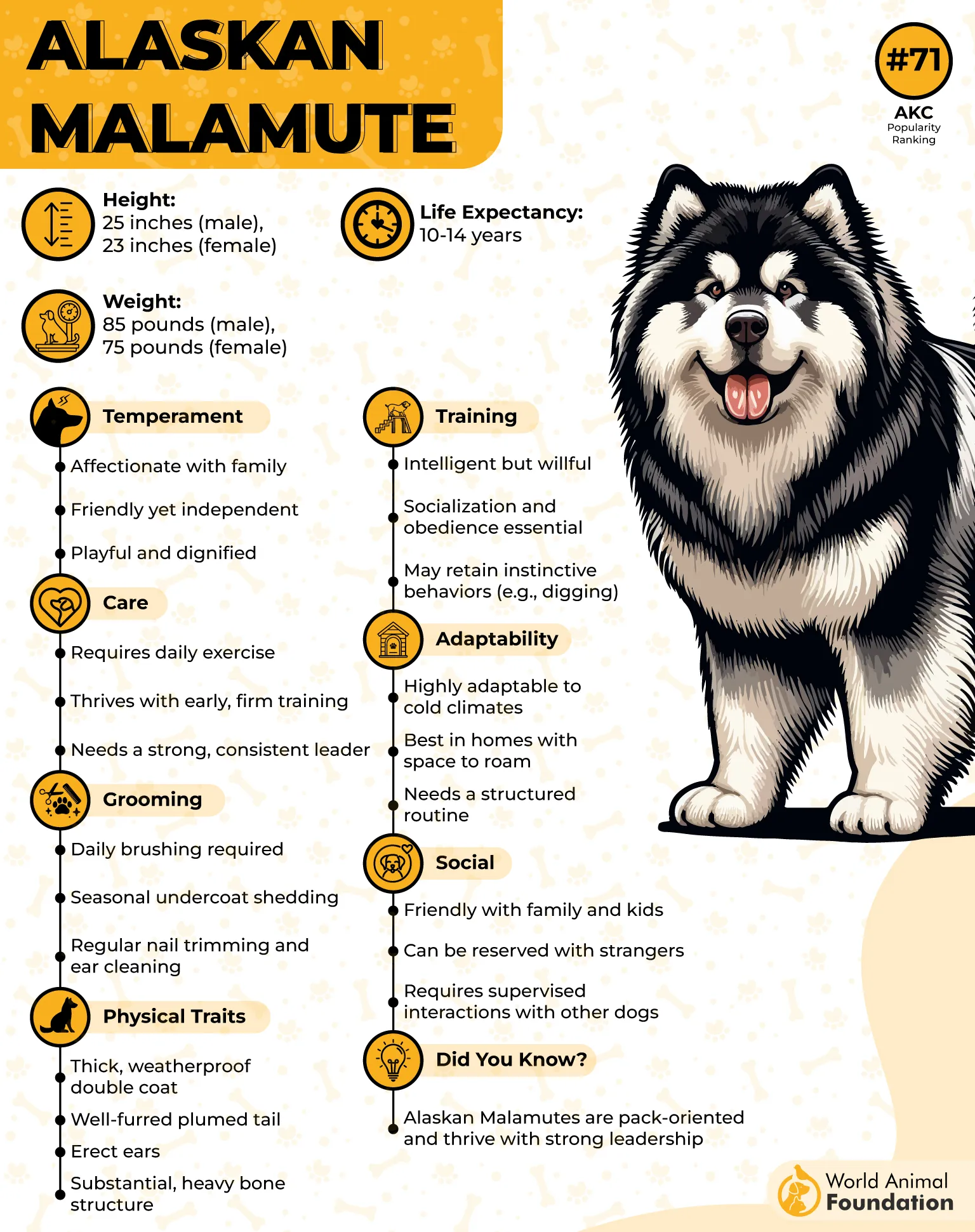
But that very same coat makes them struggle in the heat. Hot weather can lead to a higher risk of overheating and heat stroke. They are not made for high heat or humid places. If you live in an area with warm weather, you will need to keep your Malamute cool. Keep them inside during hot days and use fans, cooling mats, or air conditioning.
Regular grooming helps. Brush their coat to remove loose hair and prevent matting. Never shave them! It can make things worse.
They were named after the native Mahlemut tribe in Alaska.
They are the largest of the sled dog breeds.
One Malamute can pull over 1,000 pounds of weight.
2. Siberian Husky
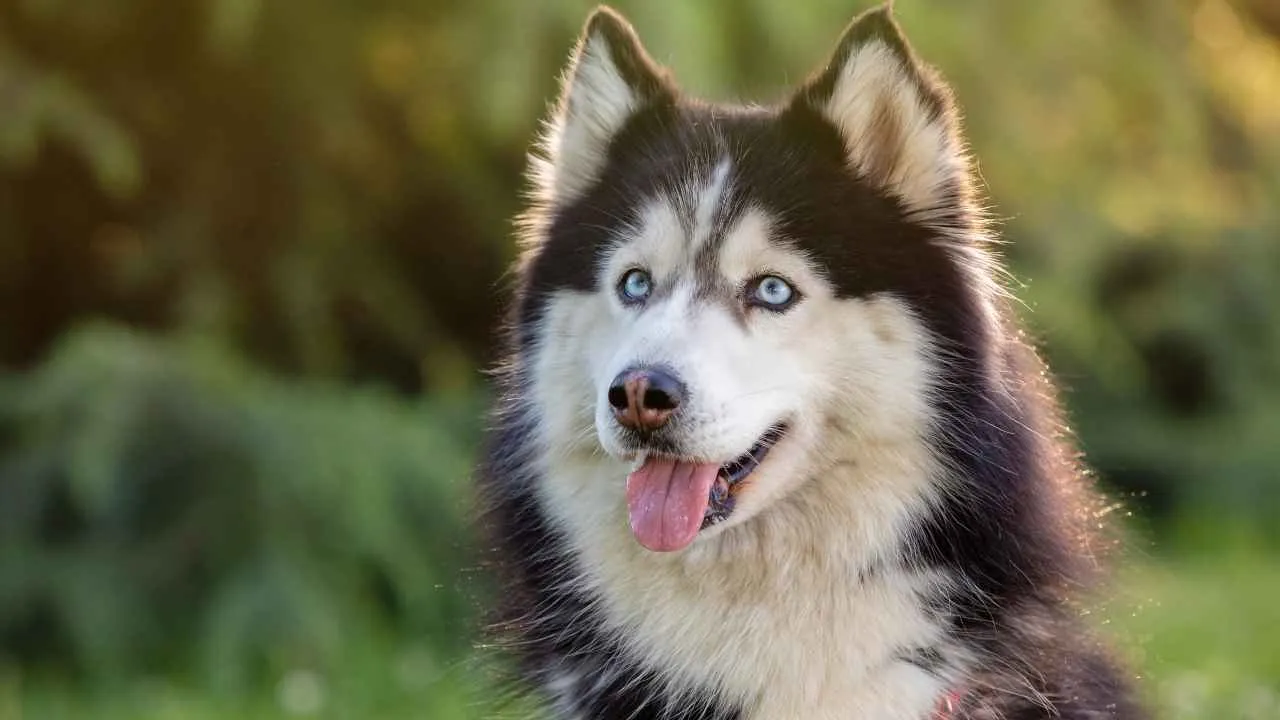
Siberian Huskies are built for the snow. Their thick double coats and furry tails help them stay warm in the freezing weather. They were bred in the North to pull sleds and run long distances. Cold weather doesn’t bother them. They actually prefer it.
Their double coat is important for them. The soft undercoat keeps heat in. The top coat keeps water and snow out. It sheds twice a year and needs regular brushing to stay clean. Even their ears and paws have thick fur for warmth. These little things help them survive in cold environments.
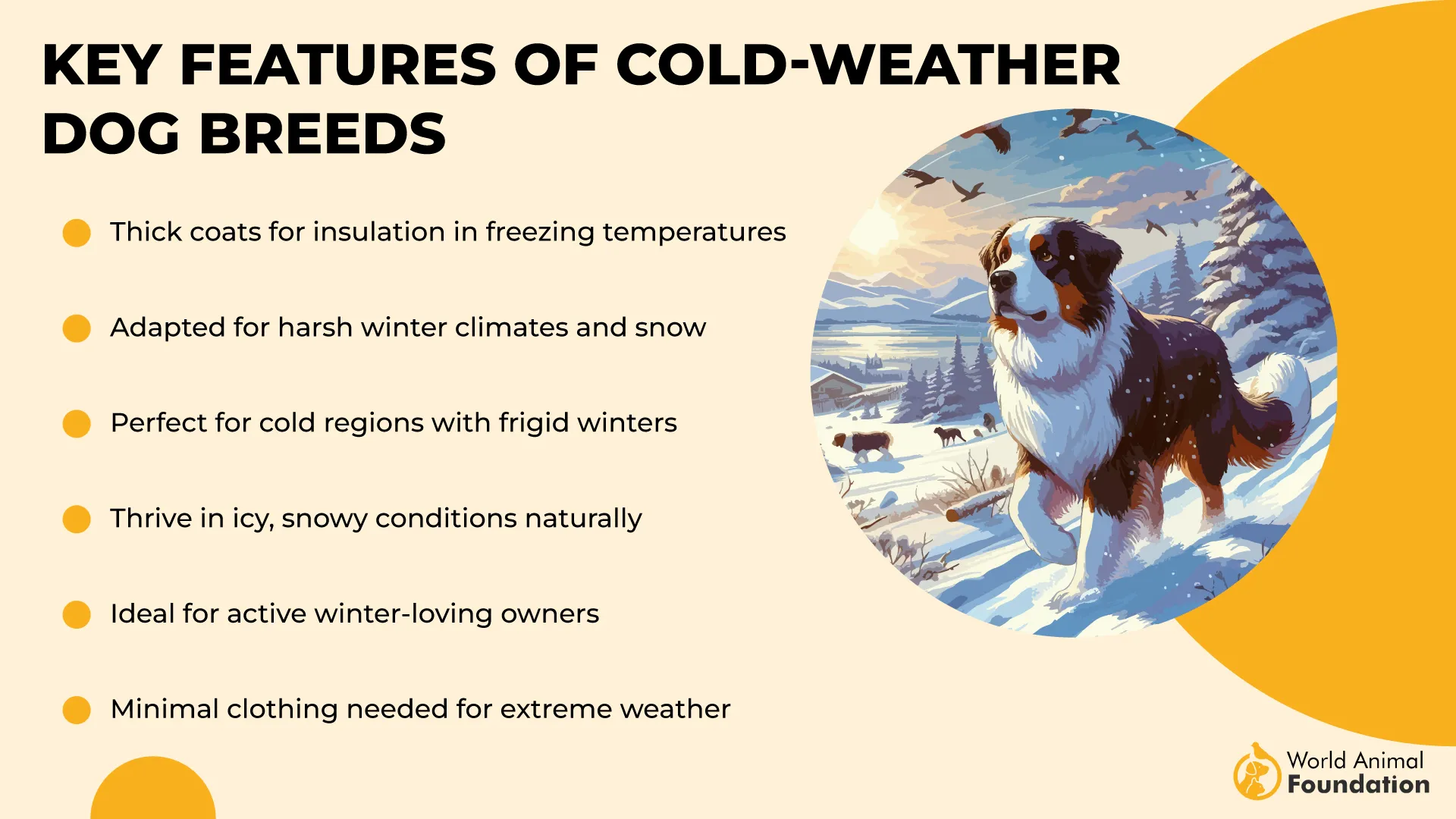
But what about hot weather? Huskies can live in warm places, but they will surely need your help. They get hot fast. You will have to watch them closely. Always allow them to stay cool and give them lots of water. Never leave them in the sun for long periods.
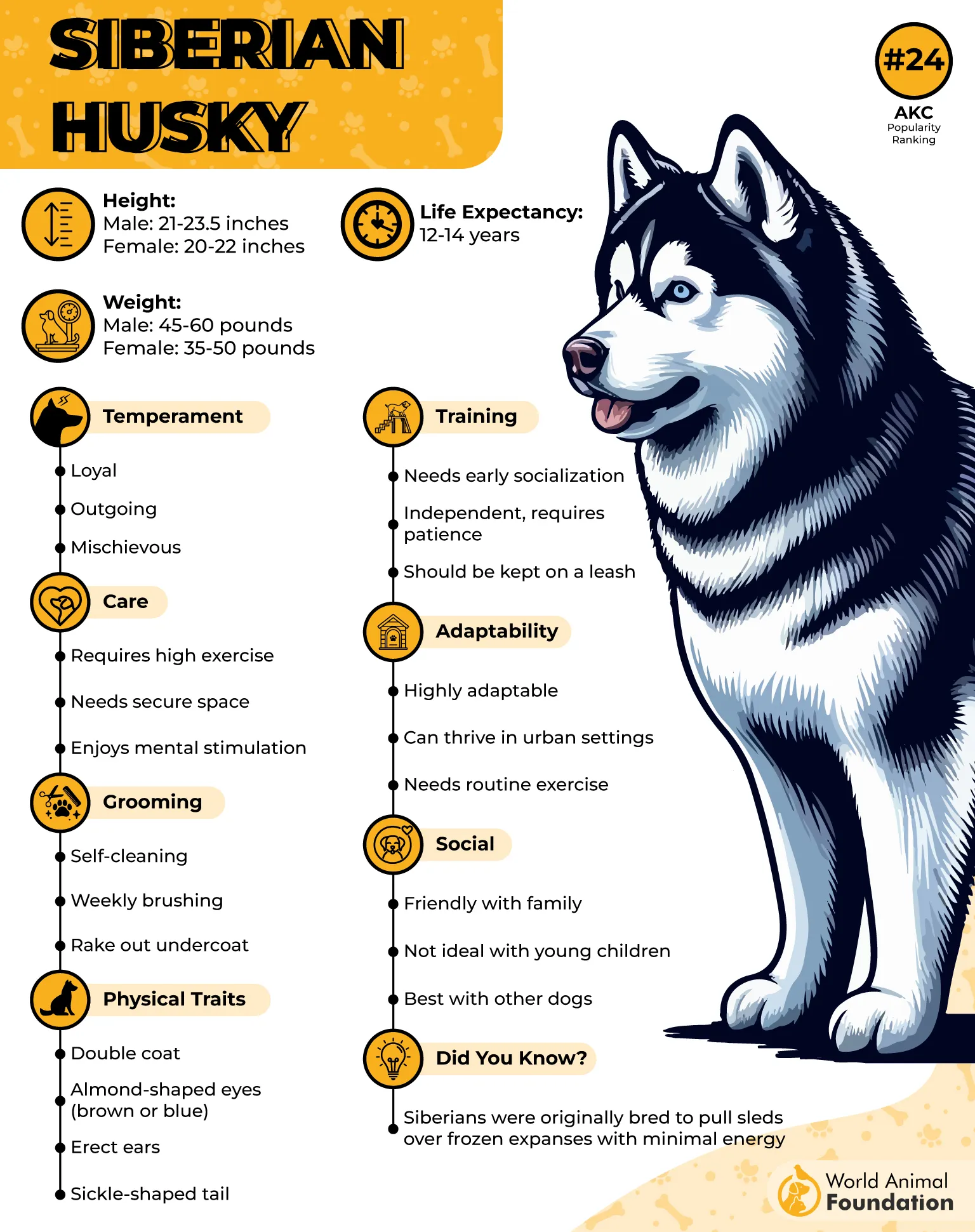
Huskies can change their eye colour as they grow. Some have one blue and one brown eye!
They are well-known for their vocalizations. They sometimes even mimic human speech sounds.
Despite their close resemblance to wolves, they are not part wolves.
3. Tibetan Mastiff
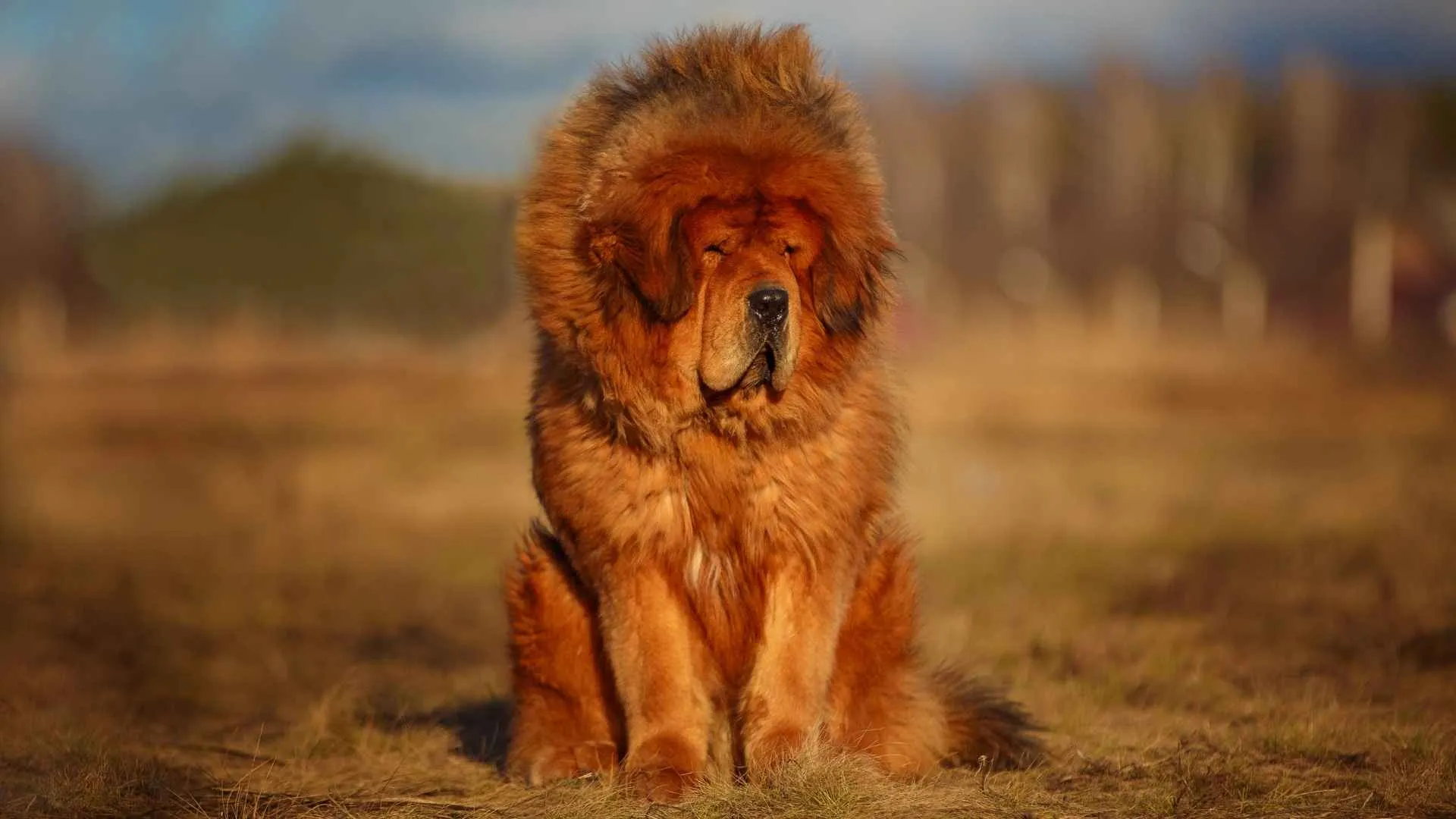
The Tibetan Mastiff is one of the oldest dog breeds. They are large dogs that don’t bark much. But when they do, it is loud enough to scare anyone away!
The American Kennel Club says that these dogs were the guardians of the Himalayas for over a millennium and are progenitors of all the modern Mastiffs. They have a thick coat and a lion-like mane around the neck and shoulders. This helps protect them from the snow and cold wind. Their heavy fur makes them perfect for cold weather, but not for hot climates.
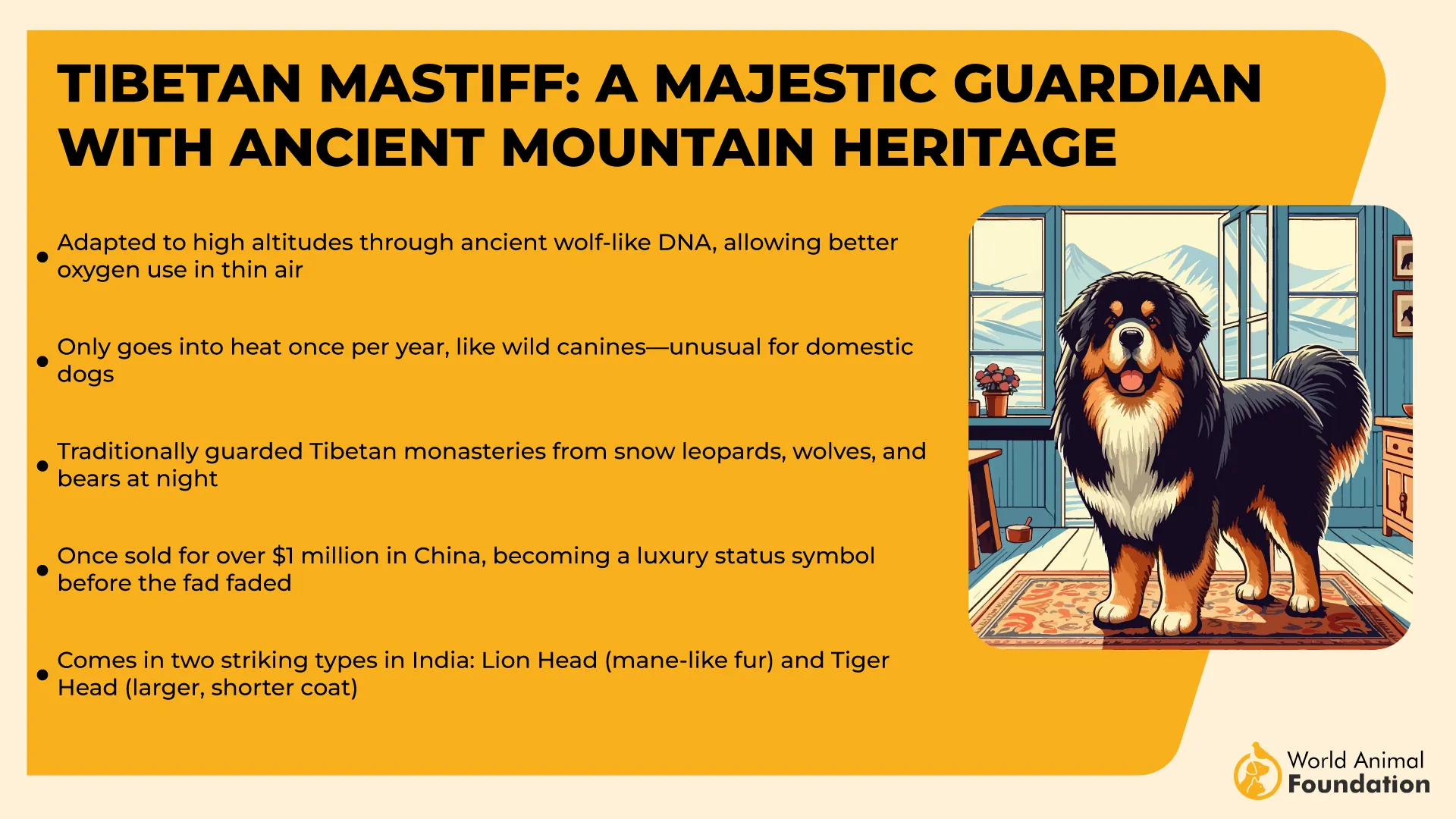
They shed once a year during coat blow season. They don’t lose as much hair the rest of the time. Still, brushing them regularly helps keep their coat healthy.
They don’t do well in hot weather in the summer months. The extreme heat wears them down fast. So if you live in a warm climate, this breed may not be the best fit for you.
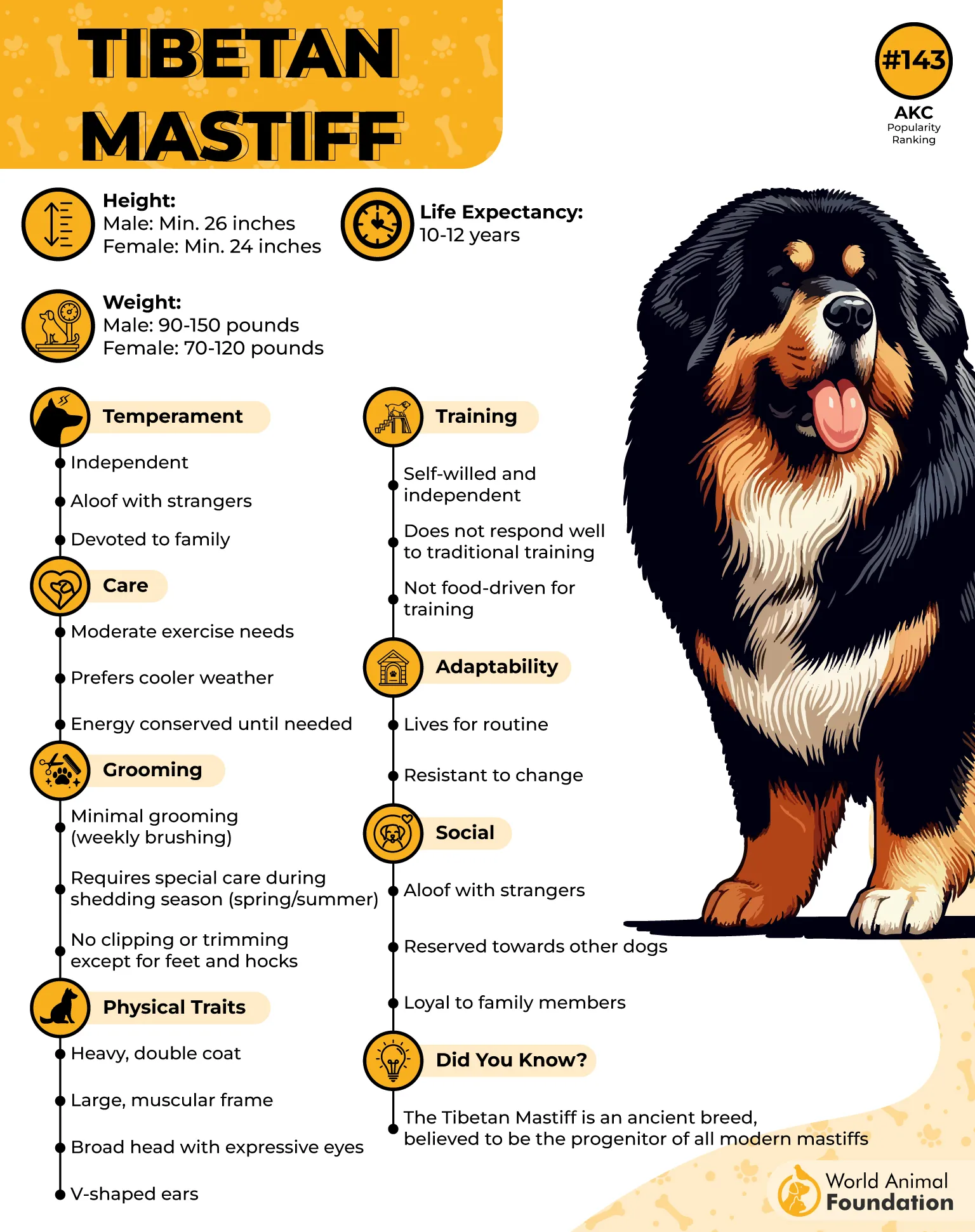
They were used to guard monasteries and homes in Tibet for centuries.
They have specially adapted lungs that make them survive at high altitudes.
They have one of the strongest bite forces compared to other dog breeds.
4. Bernese Mountain Dog
Bernese Mountain Dogs love the cold. Snow doesn’t bother them at all. They enjoy it. These dogs were made for the winter. They come from the Swiss Alps. There, the snow is deep and the temperature drops low. They have a thick double coat that helps them stay warm. The soft undercoat holds that. The longer top coat keeps water and snow out. Their strong bodies and calm nature make them perfect for colder weather.
Even though they handle the cold well, you should still watch them. Don’t leave them outside for too long in freezing temperatures. Their paws and noses can still get too cold. They may need more food in the winter to stay strong. But do not overfeed them. Weight gain can lead to other health problems.
They always have tricoloured coats.
They do not reach full maturity until 2 to 3 years of age.
They were used as “cheese dogs” and pulled cheese and milk carts.
5. Newfoundland
Newfoundlands are made for cold. These dogs come from the icy shores of Newfoundland. They were good companions of fishermen and were bred to retrieve fishing nets from the water. Their thick double coat helps them stay warm and dry, even in freezing weather. The soft undercoat holds heat. The outer coat repels water and snow.
These dogs can lie in the snow and still be happy. Some even nap with snow on their backs. Their big paws and webbed feet help them move through snow and water. They love winter and enjoy the cold.
Newfoundlands do well in temperatures between 10°F to 80°F. But strong wind and icy rain can still be too much. Even cold-loving dogs have limits. Always check how long they are outside and make sure they have a warm place to rest.
They have the nickname “gentle giants” due to their large size and gentle nature.
They are named after the island of Newfoundland in Canada.
They are excellent water rescue dogs due to their amazing swimming skills.
6. Saint Bernard
Saint Bernards were made for the snow. These large dogs come from the Swiss Alps. They helped rescue people trapped in deep snow over there. They are strong and love the cold.
Their large body holds heat well. Their thick double coat keeps them warm, even in extreme weather. Their paws are big and wide. This helps them walk on snow without sinking.
These pooches love playing in the snow! They love rolling around, sniffing the cold air, and even pulling small sleds. Winter is definitely their favourite season! But you need to keep them safe with proper care. Snow can stick to their paws and make them sore. Always check their feet after walks. Give them breaks so they don’t get tired in deep snow.
They can locate people buried 20 feet in the snow and lie on them to keep them warm until help arrives.
They are also known as “nanny dogs” for their patience with children.
They were named after the Great St.Bernard Pass in the Alps.
7. Akita
Akitas are strong and cold-ready. They come from the snowy mountains of Northern Japan. These dogs were bred to live and work in icy weather. Their thick double coat and sturdy body help them stay warm even when it is freezing outside.
The soft undercoat traps body heat close and regulates their body temperature. The outer coat keeps out the snow and water. Together, this coat works like a built-in winter jacket! However, it does need regular brushing to work well. A clean coat can hold heat better and keep the skin healthy.
Akitas don’t do well in summer heat. Their coat makes it hard to cool off, and they can suffer from heat exhaustion. This is why they are much more comfortable in cold weather. Always give them a cozy space indoors with ample shade where they can rest.
Akitas originated in Japan, where they were used to hunt large game.
They have webbed toes that make them walk much more easily on ice and snow.
Akitas are considered a national treasure in Japan and are protected by the government.
Conclusion
Some dogs are just made for cold. Their coats and physical attributes help them enjoy the snow and stay warm outside. Some other dogs not included in our list that can also withstand cold climates include Australian Cattle Dog, Afghan Hound, Golden Retrievers, Ibizan Hound, and Pharaoh Hound.
But even the toughest dogs need care. Always watch for signs of discomfort. Give them water and a warm place to rest. Brush their coats regularly and keep them safe during cold walks. If you live in a place where it gets really cold, then these breeds can be great pets. They love winter and love being with their pet parents. Just give them the right care, and they will enjoy the cold right by your side.


